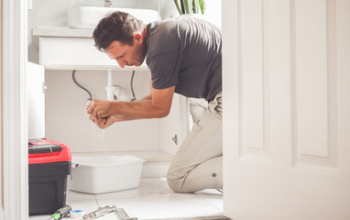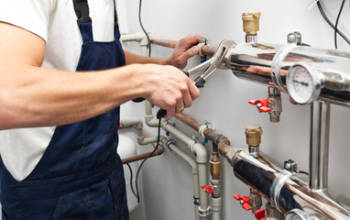Plumbing is a field that is used to convey fluids for many different applications. It uses pipes, valves, plumbing fixtures, tanks, and other apparatuses to achieve this. These plumbing systems can be found in both domestic and commercial buildings. Then, you can decide which type of pipe is right for your home or business.
DWV systems are designed to remove water from a building by diverting it elsewhere. The IRC has three chapters dedicated to DWV systems and includes examples and tables to illustrate the different components of a DWV system. For instance, pipe sizes vary according to the type of usage and route, and pitch tolerances are often as low as 1/4 in. per foot. In addition, DWV fittings are distinguished by their inlets and outlets. There are also a number of minimums that must be followed when designing a DWV system.
In a DWV system, water and waste are carried through pipes to the outdoors. The pipes connect to the main vent stack located on the roof of the building. The vent stack also provides airflow into the house. In addition to vent pipes, the system uses traps located in each drain. These traps prevent waste from retracting back into the drain and causing foul odors.
DWV pipes are typically larger in diameter than regular water supply pipes to minimize the chance of blockages. These pipes are typically 4-inches or larger in diameter. Sinks, on the other hand, may use smaller 1-inch to two-inch pipes. Older houses may contain lead pipes, but most drain piping is made of ABS plastic or cast iron.
The DWV system is made up of three separate components: the main pipe, a vent pipe, and branch lines. These pipes carry water from fixtures throughout the house to the sewage line. This way, water will flow away from home without stagnant water or foul odors.
CPVC pipes are an excellent choice for plumbing in a wide variety of settings. They are corrosion and rust-resistant and will last for many years. CPVC pipes also don’t need much maintenance. This makes them an excellent choice for homeowners who are looking to save money on plumbing and maintenance.
CPVC pipe is available in a variety of sizes, so you can choose the correct one for your needs. It is available in nominal (NPS) and common pipe sizes (CTS), which describe the inside and outside diameters, respectively. For example, if you’re installing a main water supply line, you’ll need a pipe that is NPS (numerical pipe size) instead of CTS (common pipe size).
Another benefit of using CPVC pipe for plumbing is its high level of resistance to scaling and pitting. This makes it a great choice for plumbing systems in low-rise buildings, mid-rise buildings, and shopping malls. It is also a popular choice in high-rise buildings and multi-family housing.
CPVC pipe is available in nominal sizes that correspond to the copper tube and iron pipe sizes. CPVC pipe has a hydrostatic pressure rating of 400 psi at 73 degrees Fahrenheit. It is often available in straight lengths.
There are many types of copper tubing. The outside diameter of copper tubing is measured in millimeters. Common sizes include 15mm and 22mm. But other sizes are also available, such as 18mm, 28mm, 35mm, 54mm, and 66.7mm. The smaller diameters of these copper tubes are often called “micro bores.”
Copper tubing is commonly used in plumbing systems. Its antimicrobial and upcycling properties make it a good choice for plumbing applications. It can also help building owners score high on LEED ratings. Copper tubing for plumbing is even included in China’s green building standard. The use of copper in green buildings is expected to change the landscape of the green building industry.
The copper pipe comes in three main types: Type K, Type L, and Type M. Type L is a thicker variety used for underground plumbing, hot water heating systems, and gas lines. Plumbers generally use Type M when working on a residential project, but some building inspectors may require Type L.
Type K and L copper pipes are similar in size, but Type L is thicker and more durable. Type K is used outdoors, while Type L is used indoors. These are the most popular types of copper tubing for plumbing. They are both used in water lines and can be used in many different applications. Type L is preferred in homes with hard water because it will not wear through it.


